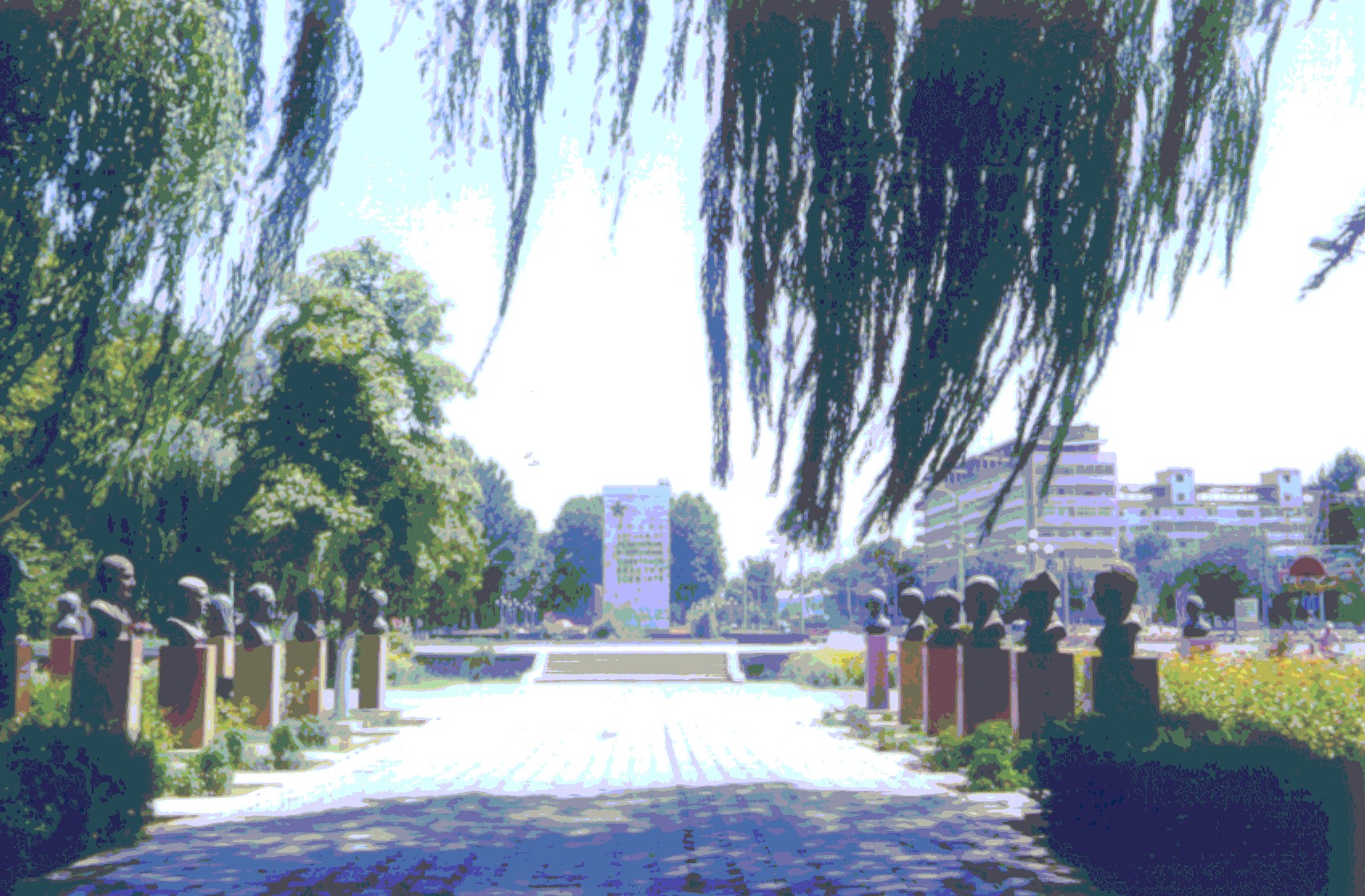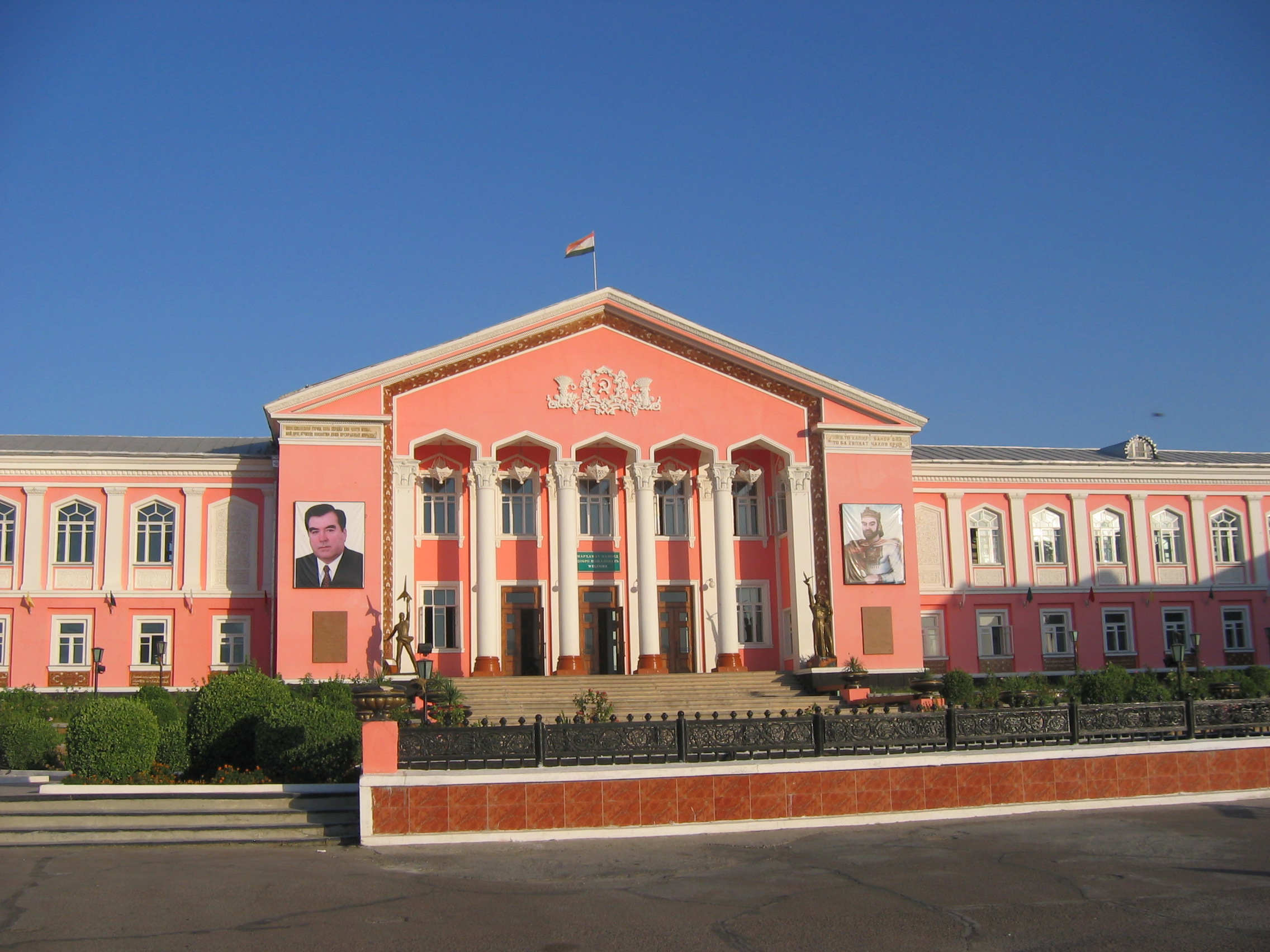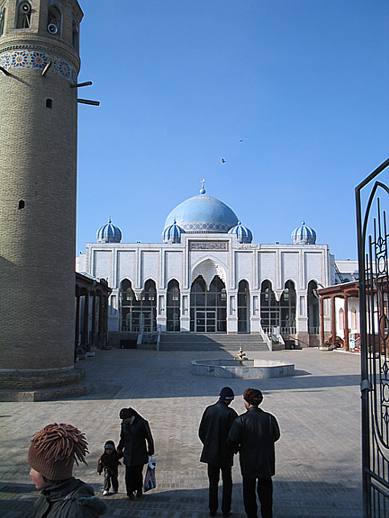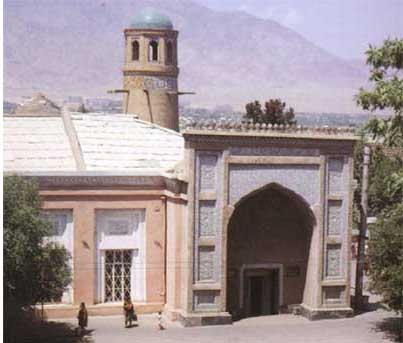|
Hot tours
Site map
Main menu
Hotels booking
Airlines Schedule
Tajik air company schedule
Somon air schedule
Uzbek Havo Yullary - Uzbekistan Airline Schedule
Kazakh air company schedule - Almaty ALA Flights Airport Schedule
Kyrgyz aie company schedule - Kyrgyzstan Bishkek Central Asia Airport - flight schedule
Turkmenistan airlines Schedule - Satans tour Turkmenistan airlines Schedule
Search
|
KhujandABOUT KHUJAND SOGDIAN REGION
Central Asia was also the field of battles, where Alexander the Great with his troops entered through the west and invaded almost the whole Central Asia. The last bulwark of Alexander the Great was Khujand. The age of the ancient town Khujand is 2500 years and in the times of Greeks invasion it was called "Alexandria Eskhata".
end of sixth century B.C. Khujand is situated in the blossoming valley of the Sir-Darya river at a height of three hundred meters above sea level. Today Khujand is the largest industrial and cultural centre of Northern Tajikistan and the second by meaning after capital Dushanbe with population of five hundred thousand.
Since ancient times being situated on the crossroads of famous trade way, Khujand was one of the major economic, military and cultural centers of Central Asia. The great silk road was passed through Khujand city, which linked ancient Greece, Rome, Asia Minor and Egypt with such countries as: China, Persia and India. Silk produce, jewelry, made by masters from Khujand were famous even far more than the Orient.
Name: Khujand
*Hotel “Khujand”
The Old Town
in everyday routine of urban life, in people's customs and dress. The old town was spared by time in some places. Middle Ages and used as a fortification work up to the beginning of the XX century .The citadel surrounded by clay walls with thick towers occupied
the area of 64 thousand square meters. The remains of the walls date back to the XVIII-XIX centuries. by the troops of Alexander the Great in the IV century B. C. The excavated household utensils of different epochs, armaments and samples of ancient
building materials are being exhibited now in the halls of Museum of Regional Studies. (meaning "Thursday market-a busy market day"). Like many centuries ago the main city market continues its functioning here nowadays. Once a lot of quarters of craftsmen entirely depending on the market were concentrated in this part of old Khujand. It is here that public buildings
such as caravanserais, teahouses, bathhouses and mosques typical of Eastern market squares appeared gradually. (the Muslihiddin Mausoleum architectural assemblage ) and to the efforts of artists and architects who have erected a new Market Complex in
the traditional Eastern style.
minaret of the XIX century. Local masters Mirzorahmat and Usto Mallabek took part in its construction.
*The Tajik traditional Tea houses with beautiful ceiling paintings.
Sogdian’s, a people of Iranian language (the Tajiks) ranging among the most important peoples of pre-Islamic Central Asia between 1,000 and 500 BC.
The ethnic and territorial name "Soghd/Soghdian" occurs in historical sources as early as in Iranian Achaemenid times (6th century B.C.). Two important cities in what is now northern Tajikistan, Khujand (formerly Leninabad) and Penjikent, as well as Bukhoro (Bukhara) and Samarqand
(Samarkand) in contemporary Uzbekistan, were Sogdian in antiquity . to the Chinese border and Mongolia. Alexander the Great took this area in the 4th century BC. The Arabs conquered Sogdiana in the early 600s. Under Muslim rule, especially with Samanid support,
Sogdiana grew to encompass Maymurgh, Kabadian, Kushaniyya, Bukhara, Kish, Nasaf, Samarqand, and Penjikent, each a virtual kingdom. They also revived the ancient urban centers as Bukhara, Samarqand, Merv, Nishapur, Herat, Balkh, Khujand, Penjikent, and Holbuk which, in turn, elevated the socio-political, economic and, necessarily, cultural dynamics of the new and progressive Samanid state. From the early days of its establishment situated at a crossroads of old trade routs of the East Khujand turned to be one of the most important economic, strategic and cultural centers in Central Asia. The so-called "Great silk rout" went via it connected ancient Greece, Rome, Asia Minor and Egypt with China, Persia and India. Goods of silk and jeweler manufactured by Khujand craftsmen were well- known far beyond the countries of the East. And today the old names of different city quarters reflect the importance of the once so much popular crafts: Pillakashon (silk-weavers), Zargaron (jewelers), Sangburron
(stone-masons), etc. Mongol hordes five centuries later having thus provisionally stemmed their advance to the West. In the year of 1866 Central Asia was occupied by Russia. In 1929, after establishing of soviet system in Central Asia, the Tajiks got their Autonomous SSR (ASSR). Although only a satellite of the Uzbek SSR. In 1929 this was upgraded to a full union republic, although (perhaps in reprisal for the basmachi revolt) Samarqand and Bukhara, two Tajik culture centers, where the population are Tajiks, remained in Uzbekistan. As recently as 1989 the government of Tajikistan
was still trying to persuade the Soviet leadership to return these areas. replaced by stooges from Moscow. Read more *Swimming in the Kairakkum Lake, some few kilometers eastward from Khujand.
*Ruins of ancient Penjikent , (some 1.5 km from the modern town of Penjikent) a major Sogdian town arose in the 5th century A.D. More about
ISFARA
KHUJAND
• The Sheikh Muslehidin architectural complex (eleventh to twelfth centuries).
Fandarya – Yagnob
• Yagnobians speaking the Sogdian dialect |
Last news
2017-03-08 VIST US AT ITB BERLIN 20172014-03-15 Pamir & mountain travel co.in ITB 20142012-12-06 Super Star Aquarius docks at Chan May port! |


|
Hot tours
Site map
Hotels booking
Search
|
KhujandABOUT KHUJAND SOGDIAN REGION
Central Asia was also the field of battles, where Alexander the Great with his troops entered through the west and invaded almost the whole Central Asia. The last bulwark of Alexander the Great was Khujand. The age of the ancient town Khujand is 2500 years and in the times of Greeks invasion it was called "Alexandria Eskhata".
end of sixth century B.C. Khujand is situated in the blossoming valley of the Sir-Darya river at a height of three hundred meters above sea level. Today Khujand is the largest industrial and cultural centre of Northern Tajikistan and the second by meaning after capital Dushanbe with population of five hundred thousand.
Since ancient times being situated on the crossroads of famous trade way, Khujand was one of the major economic, military and cultural centers of Central Asia. The great silk road was passed through Khujand city, which linked ancient Greece, Rome, Asia Minor and Egypt with such countries as: China, Persia and India. Silk produce, jewelry, made by masters from Khujand were famous even far more than the Orient.
Name: Khujand
*Hotel “Khujand”
The Old Town
in everyday routine of urban life, in people's customs and dress. The old town was spared by time in some places. Middle Ages and used as a fortification work up to the beginning of the XX century .The citadel surrounded by clay walls with thick towers occupied
the area of 64 thousand square meters. The remains of the walls date back to the XVIII-XIX centuries. by the troops of Alexander the Great in the IV century B. C. The excavated household utensils of different epochs, armaments and samples of ancient
building materials are being exhibited now in the halls of Museum of Regional Studies. (meaning "Thursday market-a busy market day"). Like many centuries ago the main city market continues its functioning here nowadays. Once a lot of quarters of craftsmen entirely depending on the market were concentrated in this part of old Khujand. It is here that public buildings
such as caravanserais, teahouses, bathhouses and mosques typical of Eastern market squares appeared gradually. (the Muslihiddin Mausoleum architectural assemblage ) and to the efforts of artists and architects who have erected a new Market Complex in
the traditional Eastern style.
minaret of the XIX century. Local masters Mirzorahmat and Usto Mallabek took part in its construction.
*The Tajik traditional Tea houses with beautiful ceiling paintings.
Sogdian’s, a people of Iranian language (the Tajiks) ranging among the most important peoples of pre-Islamic Central Asia between 1,000 and 500 BC.
The ethnic and territorial name "Soghd/Soghdian" occurs in historical sources as early as in Iranian Achaemenid times (6th century B.C.). Two important cities in what is now northern Tajikistan, Khujand (formerly Leninabad) and Penjikent, as well as Bukhoro (Bukhara) and Samarqand
(Samarkand) in contemporary Uzbekistan, were Sogdian in antiquity . to the Chinese border and Mongolia. Alexander the Great took this area in the 4th century BC. The Arabs conquered Sogdiana in the early 600s. Under Muslim rule, especially with Samanid support,
Sogdiana grew to encompass Maymurgh, Kabadian, Kushaniyya, Bukhara, Kish, Nasaf, Samarqand, and Penjikent, each a virtual kingdom. They also revived the ancient urban centers as Bukhara, Samarqand, Merv, Nishapur, Herat, Balkh, Khujand, Penjikent, and Holbuk which, in turn, elevated the socio-political, economic and, necessarily, cultural dynamics of the new and progressive Samanid state. From the early days of its establishment situated at a crossroads of old trade routs of the East Khujand turned to be one of the most important economic, strategic and cultural centers in Central Asia. The so-called "Great silk rout" went via it connected ancient Greece, Rome, Asia Minor and Egypt with China, Persia and India. Goods of silk and jeweler manufactured by Khujand craftsmen were well- known far beyond the countries of the East. And today the old names of different city quarters reflect the importance of the once so much popular crafts: Pillakashon (silk-weavers), Zargaron (jewelers), Sangburron
(stone-masons), etc. Mongol hordes five centuries later having thus provisionally stemmed their advance to the West. In the year of 1866 Central Asia was occupied by Russia. In 1929, after establishing of soviet system in Central Asia, the Tajiks got their Autonomous SSR (ASSR). Although only a satellite of the Uzbek SSR. In 1929 this was upgraded to a full union republic, although (perhaps in reprisal for the basmachi revolt) Samarqand and Bukhara, two Tajik culture centers, where the population are Tajiks, remained in Uzbekistan. As recently as 1989 the government of Tajikistan
was still trying to persuade the Soviet leadership to return these areas. replaced by stooges from Moscow. Read more *Swimming in the Kairakkum Lake, some few kilometers eastward from Khujand.
*Ruins of ancient Penjikent , (some 1.5 km from the modern town of Penjikent) a major Sogdian town arose in the 5th century A.D. More about
ISFARA
KHUJAND
• The Sheikh Muslehidin architectural complex (eleventh to twelfth centuries).
Fandarya – Yagnob
• Yagnobians speaking the Sogdian dialect |
Last news
2017-03-08 VIST US AT ITB BERLIN 20172014-03-15 Pamir & mountain travel co.in ITB 20142012-12-06 Super Star Aquarius docks at Chan May port!hotels
trekking in Fann mountain
transportations
National meal
|











































